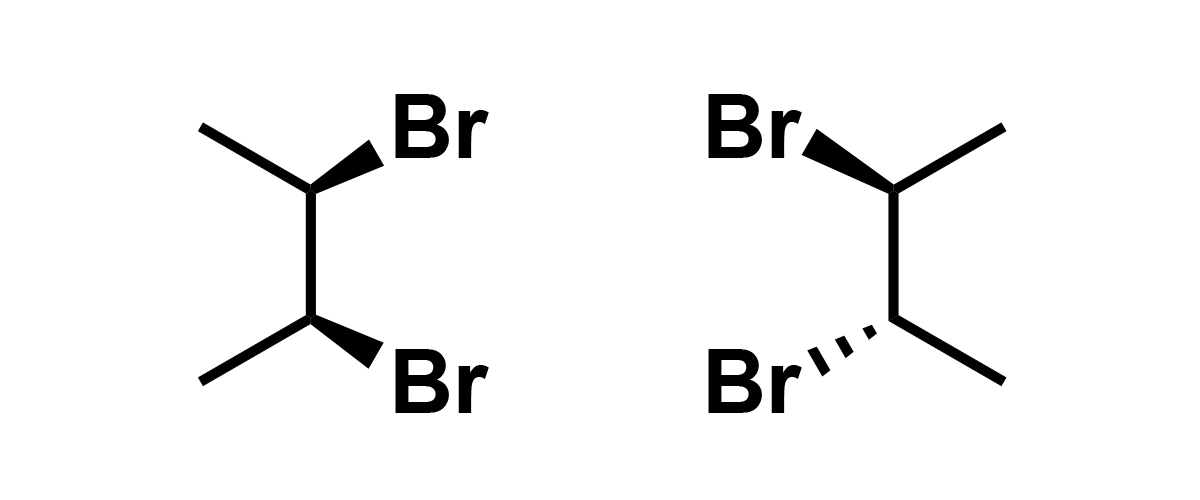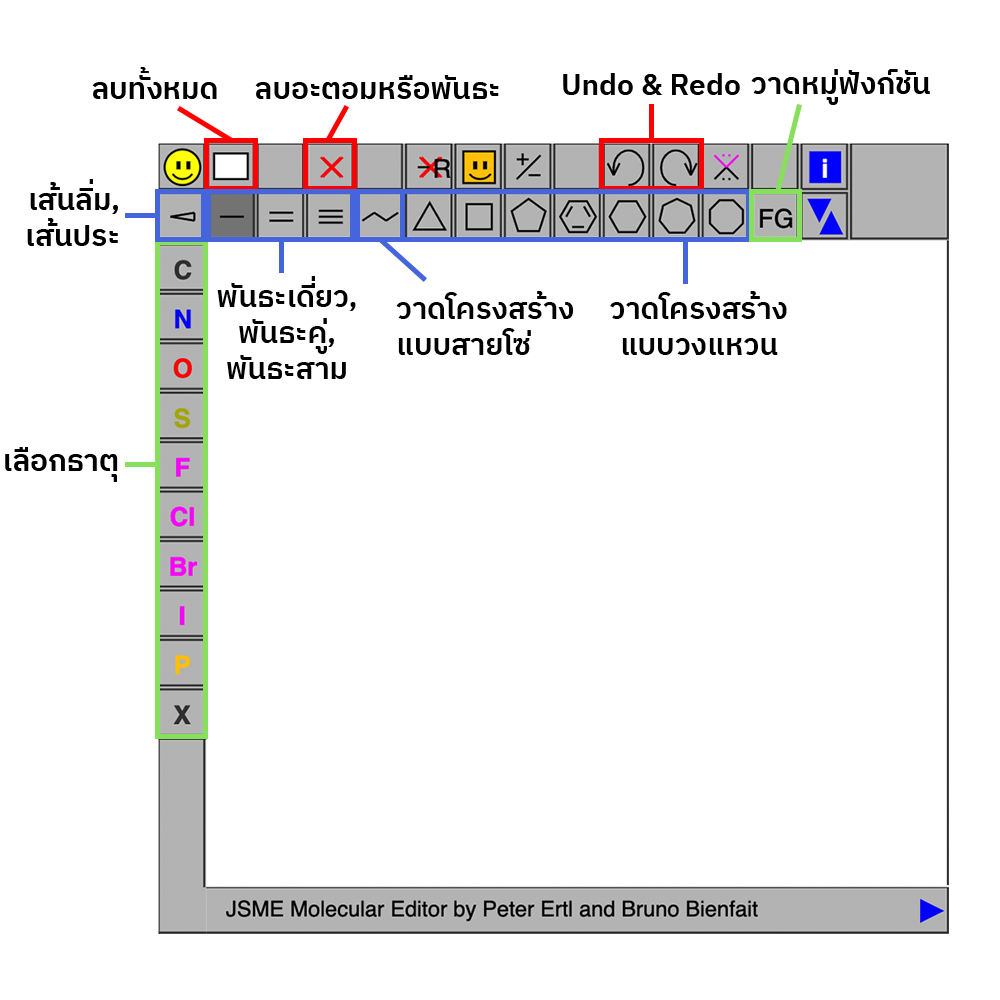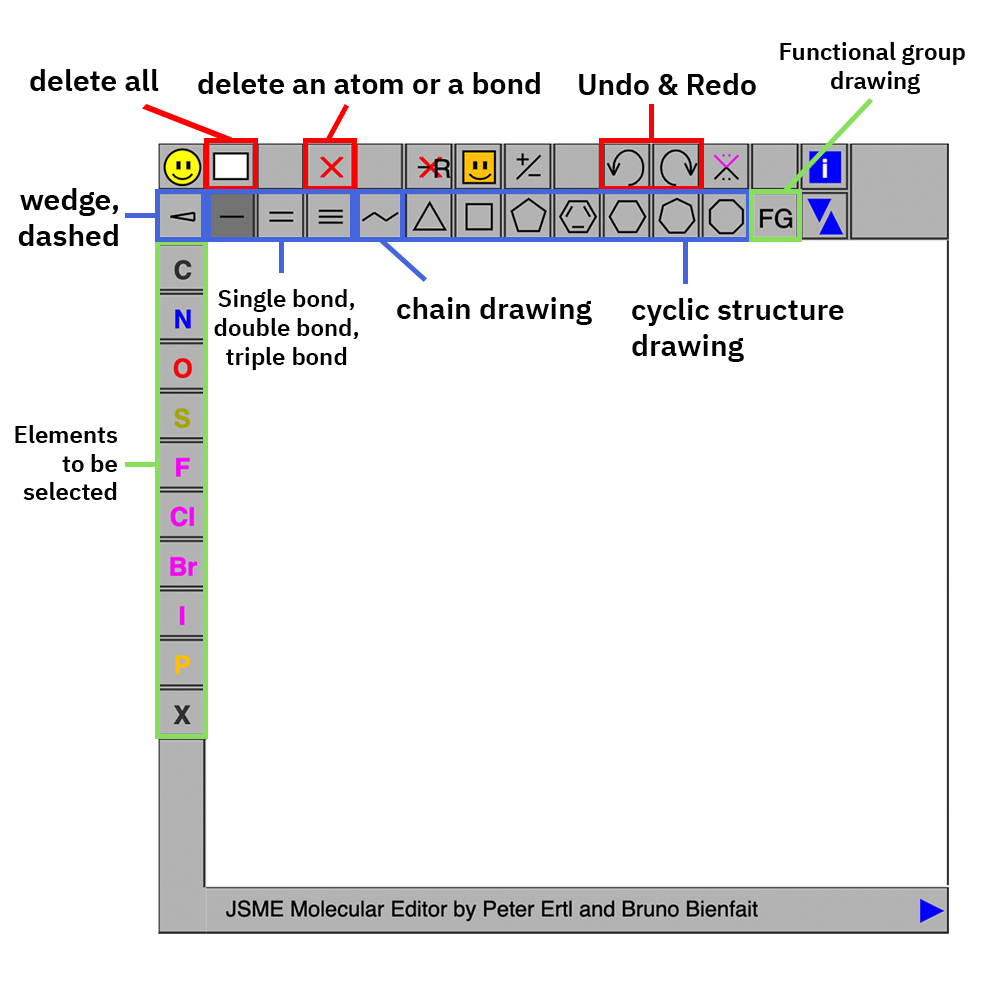Diastereomers
Interactive Activities
Diastereomers of compounds with two stereogenic centers
Purpose
To prove that two molecules that are diastereomers must possess two
properties, which are 1) they are NOT superimposable, and 2) they are NOT
mirror images.
Description
This activity uses a pair of diastereomers of 2,3-dibromobutane as an
example. The starting orientations in the JSmol windows are also drawn
as Lewis structures below. This clearly shows that the two molecules are
not superimposable.

Students should rotate the right molecule by holding a left click and
dragging the molecule into a desired direction.
This will reveal that there is no way to rotate and make the two
molecules to appear exactly as mirror images.
Settings
ตั้งค่าการแสดงผล

